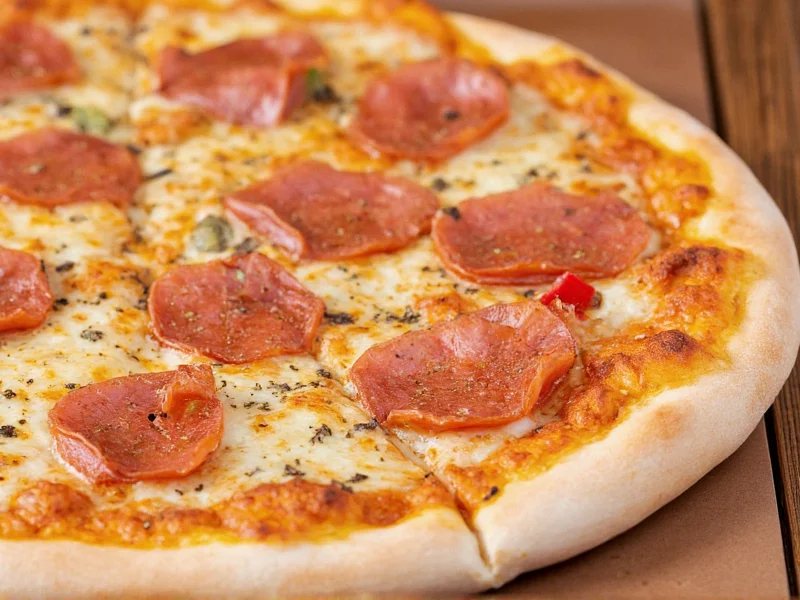The Essential Components of Authentic Pizza Seasoning
Pizza seasoning isn't just random herbs thrown together—it's a precise combination that creates the distinctive flavor profile associated with authentic Italian pizza. Unlike generic Italian seasoning, pizza-specific blends contain strategic ratios of ingredients that work synergistically with tomato sauce, cheese, and other pizza components.
The foundation of any quality pizza seasoning consists of:
| Core Ingredient | Flavor Contribution | Percentage in Blend |
|---|---|---|
| Dried Oregano | Earthy, slightly bitter base note | 30% |
| Dried Basil | Sweet, herbal top note | 25% |
| Garlic Powder | Savory depth | 20% |
| Onion Powder | Sweet complexity | 15% |
| Red Pepper Flakes | Subtle heat | 10% |
The magic happens through the Maillard reaction when these ingredients heat in the oven, creating complex flavor compounds that raw herbs can't achieve. Fresh herbs won't work as substitutes in seasoning blends—they contain moisture that would spoil the mix and lack the concentrated flavor of properly dried herbs.
Creating the Perfect Homemade Pizza Seasoning
Commercial pizza seasonings often contain fillers and anti-caking agents that dilute flavor. The best homemade pizza seasoning recipe gives you complete control over quality and freshness. Here's the professional chef-approved formula:
Yield: ½ cup (enough for 8-10 pizzas)
Prep time: 5 minutes
Ingredients:
- 2 tablespoons dried oregano (preferably Mediterranean)
- 1¾ tablespoons dried basil
- 1½ tablespoons garlic powder (not granulated)
- 1¼ tablespoons onion powder
- 1 tablespoon crushed red pepper flakes
- 1½ teaspoons dried parsley (optional for color)
- ½ teaspoon fennel seeds (lightly crushed, optional)
Preparation:
- Place all ingredients in a small bowl
- Whisk thoroughly for 60 seconds to ensure even distribution
- Sift through a fine mesh strainer to remove any clumps
- Store in an airtight container away from light and heat
For optimal flavor development, let the blend sit for 24 hours before use—this allows the essential oils to meld. Properly stored in a glass jar, homemade pizza seasoning maintains peak flavor for 4-6 months, compared to commercial blends that often degrade after 2-3 months.
Application Techniques for Maximum Flavor Impact
How you apply pizza seasoning dramatically affects the final result. Most home cooks make the critical error of adding seasoning directly to dough or sprinkling it on top of cheese—both approaches waste flavor potential.
The professional technique:
- Mix 1 teaspoon seasoning per cup of tomato sauce before spreading
- Sprinkle ¼ teaspoon directly on stretched dough before sauce
- Add another ¼ teaspoon between cheese and toppings
This layering method creates flavor depth that single-application methods can't match. For deep-dish or thick-crust pizzas, increase to 1½ teaspoons per pizza. Remember that seasoning potency varies by brand—always taste your sauce mixture before final application.
Regional Variations and Customizations
Authentic Neapolitan pizza uses minimal seasoning, relying on high-quality ingredients instead. However, American-style pizza benefits from more robust seasoning blends. Consider these regional adaptations:
- Traditional Neapolitan: Just oregano and a pinch of sea salt
- New York Style: Add ½ teaspoon sugar to balance acidity
- Chicago Deep Dish: Double the garlic powder and add ¼ teaspoon paprika
- Spicy Arrabbiata: Increase red pepper flakes to 20% of blend
- White Pizza: Replace tomato-friendly herbs with 1 teaspoon rosemary
When creating specialty pizzas, adjust your seasoning blend accordingly. For seafood pizza, reduce garlic and add lemon zest. For vegetarian options, increase basil proportion. The best pizza seasoning isn't static—it evolves with your pizza creations.
Avoiding Common Pizza Seasoning Mistakes
Even experienced home cooks make these critical errors that diminish pizza flavor:
- Using old spices: Dried herbs lose 50% of flavor after 6 months—always check freshness dates
- Over-blending: Too many ingredients creates muddy flavor—stick to 5-7 core components
- Incorrect ratios: Excess oregano creates bitterness; too much garlic overpowers
- Poor storage: Moisture causes clumping and flavor loss—never store near stove
- Applying at wrong stage: Adding only to finished pizza misses flavor development opportunities
For gluten-free or cauliflower crust pizzas—which often lack flavor depth—increase seasoning by 25%. When using premium ingredients like San Marzano tomatoes or fresh mozzarella, reduce seasoning slightly to let those flavors shine through.
Can I substitute Italian seasoning for pizza seasoning?
While similar, Italian seasoning typically contains more rosemary and thyme that don't complement pizza as well. For best results, use a dedicated pizza seasoning blend or modify Italian seasoning by increasing oregano to 40% of the mix and reducing rosemary.
How much pizza seasoning should I use per pizza?
For a standard 12-14 inch pizza, use 1-1½ teaspoons total, distributed in layers: ¼ tsp on dough, ½ tsp in sauce, and ¼-½ tsp between cheese and toppings. Adjust based on crust thickness and personal preference.
Does pizza seasoning expire?
Yes, dried herbs lose potency over time. Properly stored in an airtight container away from light and heat, homemade pizza seasoning maintains optimal flavor for 4-6 months. Commercial blends typically last 2-3 months after opening. Signs of degradation include faded color and diminished aroma.
Can I make pizza seasoning without garlic powder?
Yes, though garlic adds important savory depth. Substitute with 1 teaspoon onion powder plus ¼ teaspoon asafoetida (hing) for umami quality. For completely garlic-free versions, increase oregano to 35% of the blend and add ½ teaspoon mushroom powder for earthiness.
What's the difference between pizza seasoning and pizza sauce seasoning?
Pizza seasoning is designed for overall pizza application (dough, sauce, toppings), while pizza sauce seasoning focuses specifically on enhancing tomato sauce. Sauce-specific blends often contain more sugar and salt to balance acidity, while general pizza seasoning has higher herb concentrations for broader application.











 浙公网安备
33010002000092号
浙公网安备
33010002000092号 浙B2-20120091-4
浙B2-20120091-4